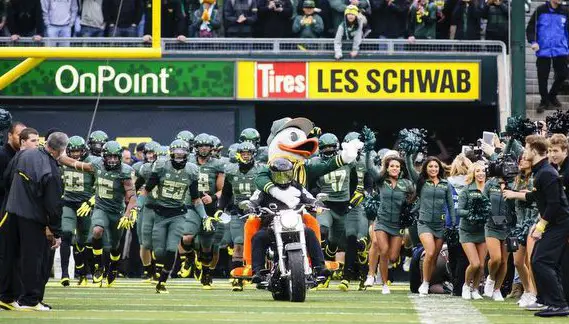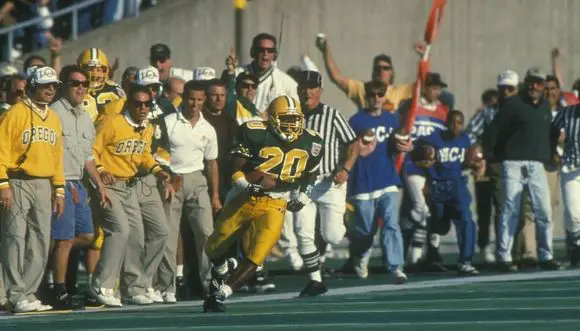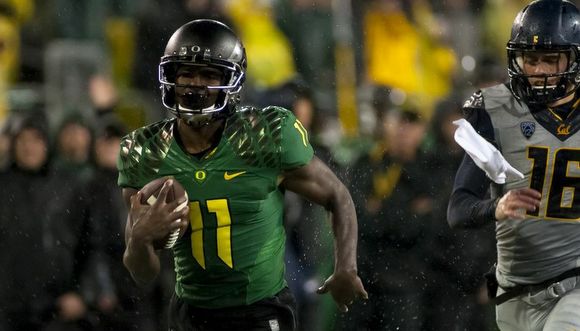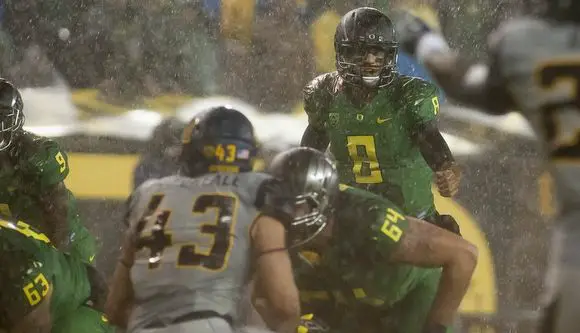Americans are coming down with a severe case of World Cup Fever over the past week — and it has to do with team spirit. With the United States winning its first match against Ghana and playing Portugal to a draw, the national team has (so far) beaten the odds in the “Group of Death” and given the U.S. a lot to be proud of. This World Cup has captured the nation’s attention, and the match yesterday set a new record for American viewership. I’ve noticed that I haven’t cheered this hard for a team, and seen people come together in support, since my days of being in the student section at Autzen. On a closer look, there is a reason for that: The Ducks and the U.S. soccer team have way more in common than you might think.
Overall Rise
For decades, U.S. soccer barely registered a blip on the on the world scale, failing to qualify for the World Cup for 40 years. It wasn’t until 1994 that this team started to get some actual attention. Sound familiar?
In 1994, the U.S. hosted the World Cup, and after making it out of group play, lost to the eventual champion, Brazil. It was then Kenny Wheaton made a play that Oregon fans can all proudly point to as the moment their program turned the corner. While Oregon has come along further on the field in the past 20 years, both of these programs have received exponentially more attention across the nation since those defining moments.
Unexpected Contributors
The U.S. is relying on unproven team members to play big minutes; 16 of the 23 players are competing in their first ever World Cup. Not only is the team fairly young, but they were rocked by big news that one of their leaders, Landon Donovan, did not make the team only weeks before the start. To make matters worse, Jozy Altidore, one of America’s biggest scoring threats, got hurt early in the tournament, and it is unlikely he’ll return. The replacements have been quite effective, though, as John Brooks, a 21-year-old, scored the game-winning goal against Ghana in dramatic fashion, and 20-year-old DeAndre Yedlin, who surprised many by even making the team, set up the goal to put us ahead of Portugal.
Oregon, on the other hand, entered spring practice this year and had to deal with a blow. Bralon Addison, the team’s biggest weapon at receiver, tore his ACL, taking him out for the season. That, coupled with the loss of De’Anthony Thomas and Josh Huff, has the Ducks looking young in the receiving department. Fortunately, players like freshmen Darren Carrington and emerging fan favorite Devon Allen have had great off-seasons and will be counted on this upcoming fall.
To take this comparison even further, both of these teams have similar last lines of defense. In soccer, the equivalent of the secondary is known as the back four. The U.S. team is inexperienced, yet led by DaMarcus Beasley, who is playing in his fourth World Cup.
Oregon will have three new starters, but the Ducks are retaining Ifo Ekpre-Olomu, one of the most experienced players in the program. Neither of the leaders were expected to be here, either, as Beasley seemed out of contention for a roster spot two years ago, and Ekpre-Olomu shocked many by returning for his senior year instead of going pro.
Rough and Tough Captains
Both of these programs benefit from incredible leadership, and they come from unlikely sources. The U.S. soccer team’s offense runs through its captain, Clint Dempsey, who has scored in both games. One thing is clear: Clint Dempsey is the face of American soccer. It’s a face that’s weathered hard circumstances, as he suffered a broken nose against Ghana and played against Germany with a noticeable black eye.
Oregon on the other hand, has its offense run through its captain, quarterback Marcus Mariota. Hailing from Hawaii, Marcus Mariota is undoubtedly the face of the Oregon program, and has also had injuries of his own to face — notably his partial MCL tear — while leading his team on the biggest stages.
Innovation
Lastly, both of these teams have coaches that aren’t afraid to take risks, and are looking to deliver the first ever championship to their respective teams. Jurgen Klinsmann of the U.S. team and Mark Helfrich of Oregon are cutting edge coaches when they lead their teams into play. Klinsmann ruffled some feathers by omitting Landon Donovan from the team, seemingly flipping American soccer on its head in terms of style of play. Now he has delivered so far in his first World Cup as the American manager and has put the rest of the world on notice. While intense on the field, off it the German soccer legend has a big smile and a witty sense of humor.
This sounds similar to Helfrich, who is entering his second season as head coach and seems to be one of the most-liked coaches in the Pac-12. He has delivered his first run as head coach, going 11-2. He’s also set a record for wins for a first-year Oregon coach. Helfrich and his high-paced offense have certainly gotten the attention of college football, as many teams have adopted a no-huddle attack, and he hopes to help guide his team to the promised land that is the brand new College Football Playoff.
Both of these teams lend excitement to U.S. sports, although on different scales. For these few weeks, America has seemingly become a college town, and all the fans are pulling for their favorite hometown team. The teams certainly have their differences, but one thing is sure: It’s great to be a fan of both right now.
Top photo by Craig Strobeck
Related Articles:
Chip Kelly Update: Everything's Good Again ...
Chip Kelly Update: Wailing and Gnashing of Teeth
Shock and Awe -- The Oregon Ducks' Football Hangover Effect
Despite Lopsided Score, Georgia State "Never Stopped Believing"
Hope Springs Eternal for Ducks
Incompetent Pac-12 Officials: How Do You Miss ALL of THIS?
Originally from San Diego, Steven decided to take a shot on attending a school over 1000 miles from home, and he’s been happy ever since. Steven graduated from the University of Oregon in 2013, and his passion for sports has followed him into his post-college life. A huge fan of both basketball and football, Steven enjoys incorporating both statistics and his own personal beliefs into his writing. When he’s not watching sports, Steven is currently training for his first half-marathon, and is looking to run a few more in the future. You can follow Steven on Twitter at @StevenHolstad




